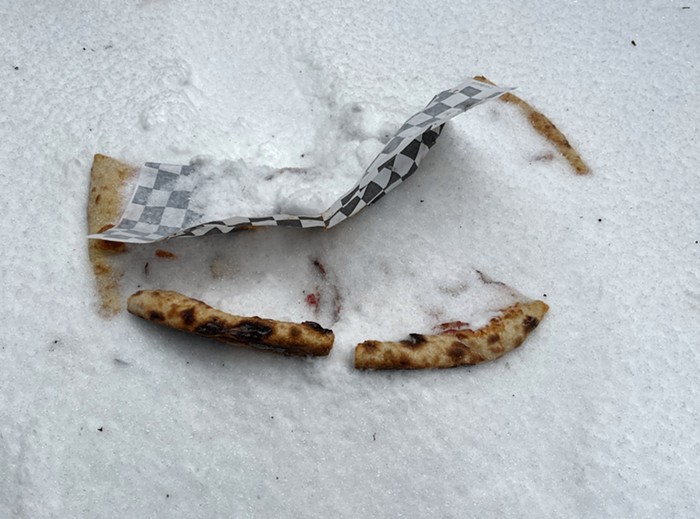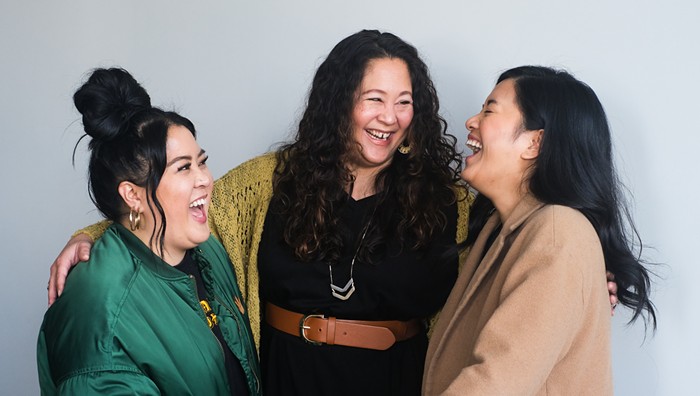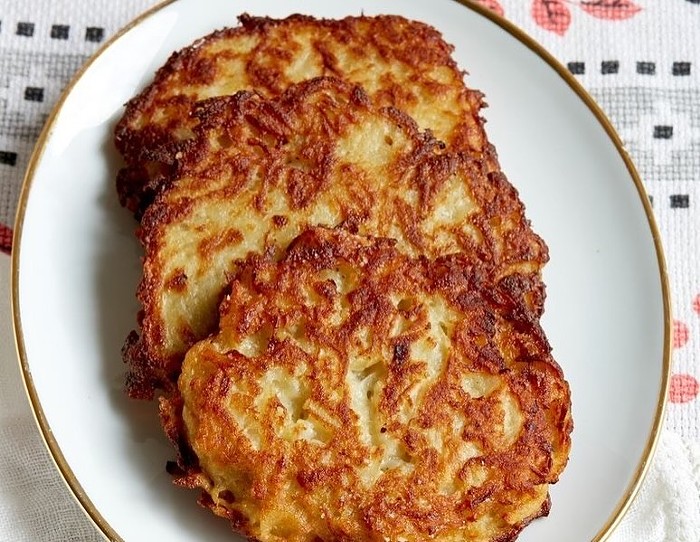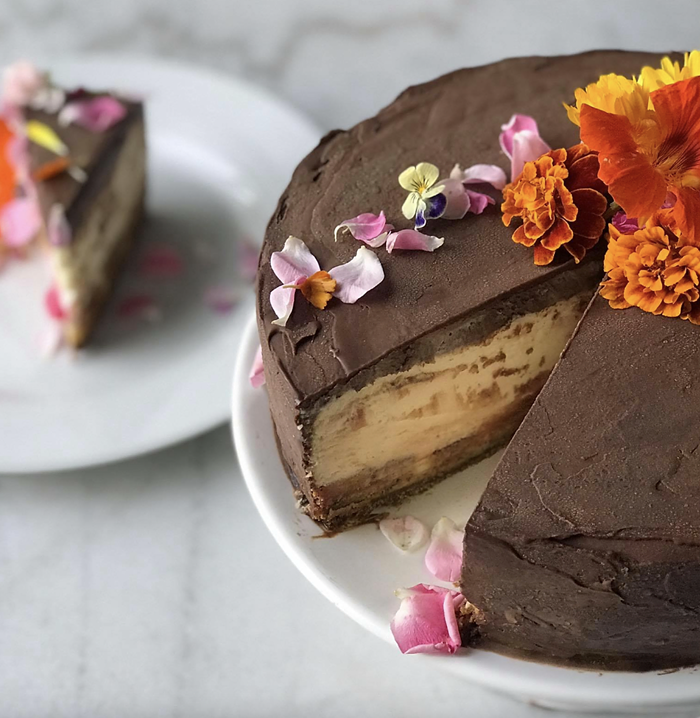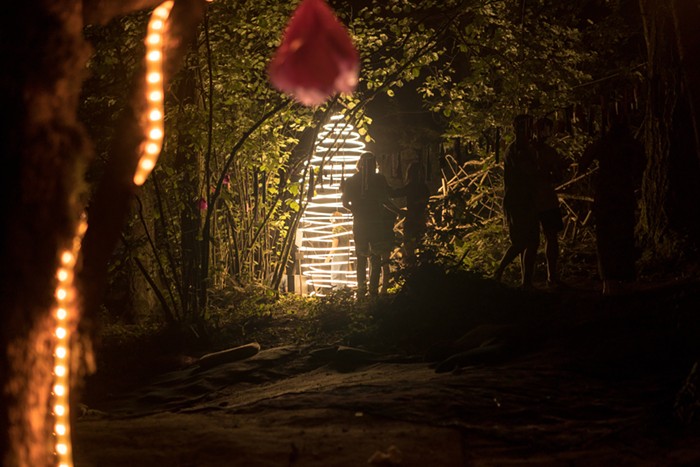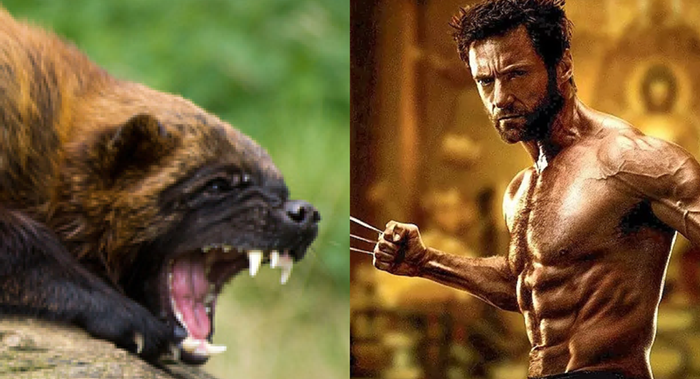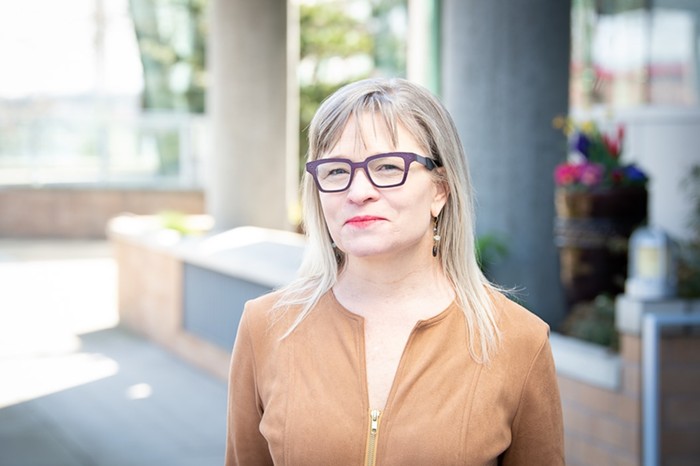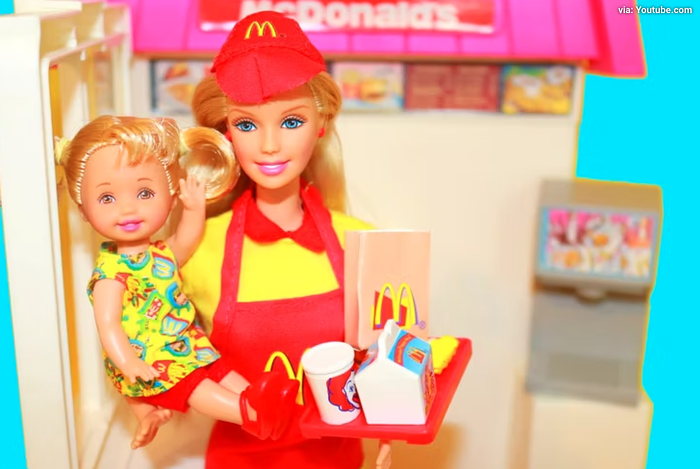
- Joel Salatin
The problems associated with the way we’ve chosen to feed our population include food borne pathogens from robust strains of antibiotic resistant pathogens, diabetes, obesity, water pollution, increased green house gasses, and a general disconnect between ourselves and real food. We wander the grocery store, reaching for whatever processed corn product we feel most suits our appetite. The source of our meals is more often the factory than the farm.
Still, we idealize the pastoral. We imagine the farmer on his beat-up tractor, or smiling happily as he feeds his livestock, or walking through his golden fields of waving grain. But anymore, the small farm is rarity. We may not see it in Portland, where we can find a farmers market ever single day of the week for most of the year. We may take it for granted that we’ve been able to develop a regional system of small farms supported by a healthy community. This is truly an agricultural Shangri-la. The majority of America is not so lucky.
Enter Joel Salatin and Polyface Farms. Salatin is an outspoken agriculture revolutionary with designs to redeem our food system. His farm has become a symbol for a new way of growing food. Well, not actually a new way. Salatin has discovered that the best way to farm the land and feed the community is to do exactly what nature has been doing for millions of years. His remarkable agricultural philosophy has been featured in Michael Pollan’s The Omnivore's Dilemma, and most recently the foodie horror film, Food, Inc. An author himself, Salatin also has a large body of work with several titles under his belt, including Everything I Do Is Illegal: War Stories from the Local Food Front and Holy Cows & Hog Heaven: the Food Buyer’s Guide to Farm Friendly Food. He speaks Thursday, August 13th, in a benefit for the Hollywood Farmers Market, at the Friendship Masonic Center [5626 NE Alameda], 7 pm. Tickets are $25 available by calling 709-7403 or by emailing tickets@hollywoodfarmersmarket.org. I spoke with Salatin yesterday about his farm, the future of food, and how we can help change the system.
Joel’s parents William and Lucille Salatin purchased what would become Polyface Farms in 1961. The land had been occupied and used by numerous intermittent tenant farmers for decades, and over that time had been essentially ruined. William had learned about growing food in an environmentally sensitive and chemical free way from his father, a prolific gardener and charter subscriber to Rodale’s Organic Gardening and Farming Magazine when the term organic was invented in the 1940’s. The tactics of ecological stewardship led William on his quest to rehabilitate the land. A generation later and without the use of chemicals, Joel Salatin presides over a vibrant farm barely recognizable from its gullied past; an interdependent cyclical system that keeps the livestock healthy and vital, and the land fertile.
How did you come up with these farming practices? Was it just trial and error?
There’s always trial and error. But there were several bedrock principles that drove the ideas. As soon as you have a bedrock value then you have to figure out how to make it work. We didn’t want to use chemicals. If we’re not going to use chemicals then how are you going to fertilize? How are you going to deal with bugs? How do you deal with thistles and weeds? All of those questions force you into creativity mode rather than dropping back and punting with chemicals. Another foundation was that we were only going to use soil building principles and not soil depleting principles. We wanted to see more earthworms and deeper soil and not thinner soil and fewer earth worms. So you look at that and ask, “How do you do that?” How does nature do that? You start to realize that nature is based on perennials not annuals, and so very early on there was this grass based idea; this perennial grass base, where we would not be a farm that practiced tillage, but rather a farm that ran primarily on perennial forages. So we didn’t have a plow, or a disk, or any of those kinds of typical farming implements.
When I speak to folks I was tell them, “Get your philosophy squared away because your philosophy will drive your innovation and not the other way around.” You don’t start with a namby-pamby philosophy and then innovate and stumble into a wonderful philosophy.
Was all of this apparent form the outset?
You have to understand that as poor as the fertility was on the farm, it’s just like anything in healing. If you skin your finger, for example, the first couple days it doesn’t look like there’s anything going on, then there’s a biological speed-up in healing. The first part is pretty slow going. And that’s the way it was for us.
We didn’t see much progress for the first couple of years—for several years in fact. But we kept chopping thistles. We kept composting. We kept moving the cows around, and you know, really huge differences started happening about year 12 to 15. Once we started moving the cows everyday, and everything became refined—tweaked, more tightly controlled, tighter biomimicry—then that leverage created a synergistic explosion of healing. In just ten years we went from a farm that could scarcely support 20 cows to one that supported 100 cows with ease
Tell me more about biomimicry.
One of our bedrock values is that we’re trying to use nature as a template in a commercial domestic production model. Look, for example, at herbivores. They don’t eat fermented forage, like silage, they don’t eat grain, and they certainly don’t eat chicken manure, dead chickens or dead cows [all common food in Concentrated Animal Feeding Operations].
So, if we’re going to raise herbivores, we’re going to not feed those kinds of things to them. We’re also going to look at herds of herbivores in nature and determine how they live, what they eat, and what they do.
What we noticed is they don’t spread out over a pasture; they’re mobbed up for predator protection. They move every day to a new spot, and new grass, and away from yesterdays toilet area. They mow. They’re not eating grain like in a feed lot. So when you start taking those principles, like a pattern or a template, and start laying them down on domestic production then that pushes us. How can we get them in a mob? We use electric fencing and we move them everyday to a new spot. All that this is is simply trying to duplicate what buffalo, wolves, fire, and Native Americans were doing for a millennia before Europeans came. That’s all it is. That model, that technique, is what built the fertile prairies that we’re still exploiting in the grain basket of America.
Why do you think this idea of biomimicry is not more widely espoused?
Hubris. I think it’s just our human arrogance and pride that we think we can outfox nature. We’ve gotta understand that in our western culture we are a product of fragmentation, compartmentalization, systemization, disconnectedness, and individualism. All of that essentially says there’s no moral or ethical parameter on what I can innovate. So we’ve innovated things that we cannot physically, spiritually, or emotionally metabolize. We’ve innovated chemicals that make three legged salamanders and unfertile frogs.
Some of us in our culture realize it’s probably not a good future for our children where the salamanders have three legs and the frogs are sterile. To most in our culture, they don’t realize it, or they don’t care because it doesn’t show up on a balance sheet, business plan, or tax statement. So the most important thing, intuitively, in our hearts, never makes an empirical impression in our business plans and management. It’s the ultimate segregation.
The obvious extension of Concentrated Animal Feeding Operations is a new generation of antibiotics that are hopefully one step ahead of the pathogens genetic progression. And I don’t know about you, but I’m not willing to bet that human cleverness will be able to do that indefinitely. Yet, that’s exactly what our culture is betting on: irradiation, pharmaceuticals, vaccines, and all sorts of cleverness to stay one step ahead of the adaption of pathogens. I think more and more Americans are realizing that’s not a winnable bet.
Tell me a bit about the food safety bill [H.R. 875, currently in consideration in the US Senate].
It won’t lead to any safer food. It’s an industrial attempt to demonize, marginalize, and criminalize the true antidote, which is pasture based, diversified, locally commerced food. That is absolutely the antidote for the food safety issues that we’re seeing. Yet this bill absolutely will, if not destroy, then certainly maim the local food system.
What are the biggest barriers this bill presents for farmers?
The biggest one, in my opinion, is a provision to give the FDA unprecedented power to make warrantless searches on any American farm to determine if practices are “science based.”
“Science based” is a very subjective term. I think that what we do is science based but the USDA, [he pronounces it U.S. “duh”] does not believe that what we do is science based. When they say “science based” they’re talking about drugs, and vaccines, and pharmaceuticals, and cloning, and a host of other things. That’s science based.
Again, this is a perfect example of the pushback as our system gains credibility and acceptance in the marketplace. This is an example of our industrial food system manipulating our lawmakers and the USDA to keep us on the fringes—to basically put this heritage food “in the teepees,” if you will, so it can’t continue to erode market share. It’s not about food safety, it’s about controlling market access.
How do you combat this kind of thing?
Don’t feed the beast. Don’t eat industrial food. Easier said than done. The best way to not eat industrial food is to buy local, unprocessed, and process it in your own kitchen by freezing, drying, cooking, sautéing, pureeing, and all the other domestic culinary skills we’ve developed over the years.
What you’ll find is not only does it make better tasting food, and not feed the industrial beast, but also it’s cheaper. Processed food is extremely expensive. Compare the ten cent per pound Idaho baking potato to the five dollar per pound potato chip. We need to be eating as close to the source as possible and discovering our kitchens—relearning domestic culinary skills.
The point I’m trying to make is that so many people think there’s nothing they can do until there’s some law, or that we need legislation. No. We don’t need laws, we just need to quit patronizing the industrial beast and it will die of attrition. Collectively, you and me, and your readers, one forkful at a time, one meal at a time, can choose which system is going to gain ascendency and which one is going to be malnourished.
Is there a place for politics, though?
It’s great to contact your senators. It’s great to be opposed to this particular bill. The alternative legislation would be what I call a “Freedom of Choice” bill, which would allow every American to purchase whatever kind of food they want. Right now, if you want to purchase a glass of raw milk you can’t purchase it. We need to bring freedom of choice back into the marketplace.
What’s interesting to me, is that in order to have consistent political philosophy on this, then we need to stop our War on Drugs. It’s not reasonable to say, “Give me the freedom to drink raw milk,” when all of the public health experts say that it’s not a safe thing, and then tell them, “I don’t want people to be able to take cocaine or marijuana if they want to take it.” And I’m a pretty conservative religious-righter. Boy it’s an amazing thing when I tell my buddies that they have to give up the War on Drugs. But if we give it up and gain food freedom, it would be a great trade-off. The fact is, when the government gets between my mouth and my stomach, that’s a pretty intrusive government. The only reason our founding fathers did not give us the right to food freedom, is because they could not have foreseen the day when a neighbor could not get a t-bone steak or a glass of raw milk from a neighbor.
Will we ever be able to overcome our desire for convenience?
I’m not saying we should outlaw industrial food. What I am saying is that we should have a freedom of choice option for those who want to opt out. If you want to live on Fritos and coca-cola, that suits me just fine. But all you who are doing that, and driving up healthcare costs with diabetes and obesity, don’t outlaw a healthy alternative for me.
Right now in the food system we’re at Wounded Knee. By the time of Wounded Knee, the thought of the Native American population uprising and taking over the Unites States was a ludicrous idea. There was no threat to the culture from the Native Americans, and yet it was the thinking among our culture at that “this barbaric people needed to be extinguished and annihilated.” That’s the problem of this food issue today. If Monsanto wants to make some sort of pseudo, food-extracted, cloned, genetically-modified something-or-other-material and label it food, that’s fine with me. The problem is that the Monsantos and Tysons view me as a threat. They say my non-science based chickens will destroy the entire worlds food system because of my lack of appreciation for science based food practices.
The industrial food system is not willing to live in peace with a healthful alternative. Let’s assume that raw milk was deadly. If I want to drink it, that’s my prerogative. It’s just that the people who have sold their souls to the industrial food system are not willing to live with an alternative, they want to destroy it.
People are looking to their own land to help remove themselves from the industrial food complex. Is your method of biomimicry scalable to any plot of land?
That’s one of the beauties of our system. It’s scalable up and down because the capital is not in infrastructure but in knowledge. Whenever you have a knowledge based infrastructure it’s not scale dependant.
It can be done anywhere. It can be done with three chickens. You shut down your garbage disposal, feed your scraps to the chickens, the chickens give you two eggs a day and when their done you have chicken meat. To me it just makes all sorts of sense. There’s a tremendous amount of good food security there. Also, there is about 18 million acres of lawn in the US, and you could almost feed the entire US on the lawns of America.
The system we have now is totally abnormal and unique in all of human history. It’s important to realize that in the continuum of history we are a veritable blip of experimentation. If you’re gonna bet on what tomorrow will look like, the chances are tomorrow will look much more like the recent past than what we have going on today. The best bet is that we will not continue to thrive on food that sat for a month in the belly of a Chinese freighter. No civilization in history, as its heritage based food system began crumbling, survived for long.
That’s pretty bleak.
It’s only bleak if you’re unwilling to embrace a time tested “normal” existence. If your whole world revolves around Paris Hilton and the next Blockbuster Video release then its bleak indeed, because the thought of donning an apron, and canning some tomatoes, and learning how to use some of that kitchen gadgetry is daunting. But I can assure you that there are thousands and thousands of young people connecting to the ecological umbilical that attaches us to this nest.
So what kind of advice do you have for people who need help to navigate a world without industrial food?
I take a very pragmatic view. 1) You don’t have to change it all in a day. Change a little bit at a time. 2) The change has to occur in your heart. As you change, you will begin to adapt. One of those adaptations will be simply to become hypersensitive and aware of things that you never were before. 3) You’ve heard the phrase “If it’s worth doing, it’s worth doing right.” I’ll free you from that by giving you the real statement: “If it’s worth doing, it’s worth doing poorly.” No-one does it right the first time. Who ever tells their kid learning to walk, “Look, kid, if you can’t stand up and walk then don’t even try.”? From my perspective, if it’s worth doing, it’s worth doing poorly first because that’s the way all things are done early-on. You don’t have to worry about that first pound cake looking like aunt Matilde’s because that’s the way you remember it from childhood. You start into it and you just enjoy doing it poorly. As you begin visiting farms, or visiting the farmers market, or joining a CSA—you read, you talk, and your interest will guide your knowledge base. You’ll move forward by default.
Farmers markets are a great place to start. Also, Eatwild.com is a national directory of pasture based livestock producers.
Take the money you were saving up for vacation and invest it in a treasure hunt to find what’s available in your community. Every single community has great farms. Many of them are desperately struggling for sales and for patrons. Eaters need to unplug themselves from all the fluff and fuzziness of life, and at least devote one year to treasure hunting their communities, to find this gold buried in their backyard. Not only will it be an exciting discovery time, putting on your Indiana Jones hat, but it will also give you some stories that are every bit as good as a trip to Disneyland.
